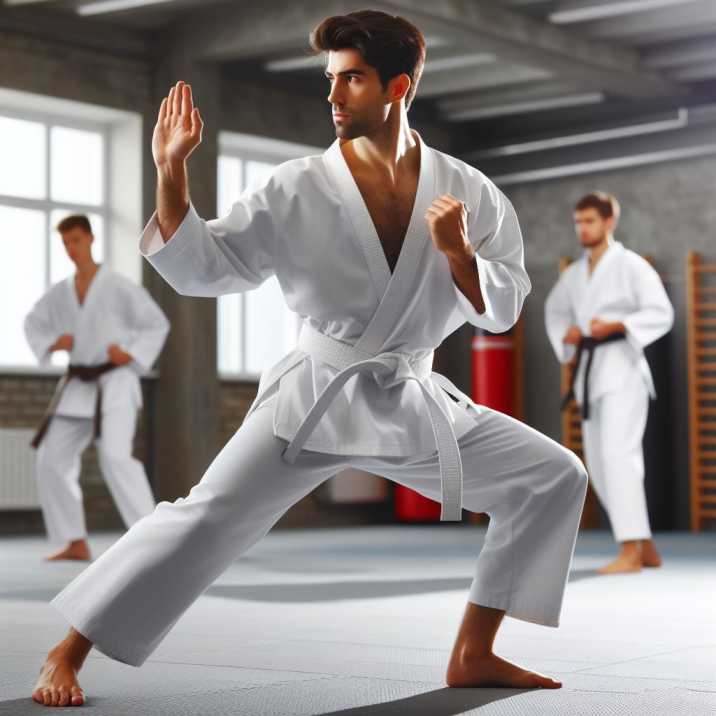Introduction
Table of Contents
Kickboxing, a dynamic and exhilarating martial art, has captured the imagination of people around the world. From its humble beginnings to its current global popularity, the history of kickboxing is filled with intriguing stories and remarkable figures. In this comprehensive guide, we’ll delve into the origins of kickboxing and explore the question: Who invented kickboxing?

Who Invented Kickboxing?
Early Origins
Kickboxing traces its roots back to ancient civilizations where various forms of martial arts were practiced for self-defense and combat. In ancient Greece, for example, the sport of Pankration combined elements of boxing and wrestling, laying the groundwork for later forms of combat sports. Similarly, ancient civilizations in Asia, such as China and Thailand, developed their own martial arts traditions that incorporated striking techniques with hands, feet, elbows, and knees.
The Birth of Modern Kickboxing
Japanese Influence
While kickboxing has ancient roots, the modern sport as we know it today can be attributed to Japan in the mid-20th century. During the 1950s and 1960s, Japanese karate practitioners began experimenting with incorporating kicks and punches into their training regimen, leading to the development of a new style known as full-contact karate or “karate-kaikan.”
Key Figures in the Evolution of Kickboxing
Osamu Noguchi
One of the key figures credited with popularizing kickboxing is Osamu Noguchi, a Japanese boxing promoter and martial artist. Noguchi played a pivotal role in organizing the first official kickboxing events in Japan in the early 1960s, bringing together fighters from different martial arts backgrounds to compete in full-contact matches.
Spread of Kickboxing to the West
American Influence
In the 1970s, kickboxing gained traction in the United States, thanks in part to the efforts of American martial artists and promoters. Kickboxing matches were featured in popular venues such as Madison Square Garden, attracting a growing audience and sparking interest in the sport across the country.
The Role of Television and Media
Broadcast Coverage
The rise of television and media coverage played a significant role in popularizing kickboxing on a global scale. Major networks began broadcasting kickboxing events, exposing millions of viewers to the excitement and athleticism of the sport. This increased visibility led to a surge in participation and interest from martial arts enthusiasts around the world.
Evolution of Kickboxing Rules and Regulations
Unified Rules
As kickboxing gained popularity, there was a need to establish standardized rules and regulations to ensure fair competition and safety for fighters. Organizations such as the International Kickboxing Federation (IKF) and the World Kickboxing Association (WKA) played key roles in developing unified rulesets that govern the sport today.
Modern Kickboxing Styles and Variations
Muay Thai Influence
In addition to traditional kickboxing, various styles and variations of the sport have emerged over the years. One of the most notable influences is Muay Thai, a martial art from Thailand known for its devastating striking techniques. Many modern kickboxers incorporate elements of Muay Thai into their training, adding diversity and complexity to the sport.
Impact of Kickboxing on Fitness and Self-Defense
Health Benefits
Beyond its role as a competitive sport, kickboxing has also gained popularity as a fitness activity and self-defense training method. Kickboxing classes offer a full-body workout that improves cardiovascular health, strength, and flexibility while teaching valuable self-defense skills.
Conclusion
In conclusion, the question of who invented kickboxing is a complex one with roots stretching back to ancient civilizations. While its origins may be ancient, the modern sport of kickboxing as we know it today can be attributed to the innovations of martial artists in Japan and the United States. From its humble beginnings to its current global popularity, kickboxing continues to captivate audiences with its athleticism, skill, and excitement.
Table of Information
| Subtopic | Key Insights |
|---|---|
| Early Origins | Ancient civilizations in Greece and Asia practiced martial arts with striking techniques. |
| The Birth of Modern Kickboxing | Japan in the mid-20th century saw the development of full-contact karate. |
| Key Figures in the Evolution | Osamu Noguchi played a pivotal role in organizing the first official kickboxing events. |
| Spread of Kickboxing to the West | Kickboxing gained traction in the United States in the 1970s. |
| The Role of Television and Media | Television coverage helped popularize kickboxing on a global scale. |
| Evolution of Kickboxing Rules | Organizations like the IKF and WKA established unified rules for the sport. |
| Modern Kickboxing Styles | Muay Thai has influenced modern kickboxing techniques. |
| Impact of Kickboxing on Fitness | Kickboxing offers a full-body workout and self-defense training. |
Frequently Asked Questions (FAQs)
- Who is considered the father of kickboxing? Osamu Noguchi, a Japanese boxing promoter, is often credited as one of the key figures in the development of kickboxing.
- Is kickboxing suitable for beginners? Yes, many gyms offer beginner-friendly kickboxing classes that cater to individuals of all fitness levels.
- What equipment do I need for kickboxing? Basic equipment includes hand wraps, boxing gloves, and comfortable workout attire. Some gyms may provide additional gear such as kicking pads and punching bags.
- Are there different styles of kickboxing? Yes, various styles of kickboxing exist, including American kickboxing, Muay Thai, and Japanese kickboxing, each with its own set of rules and techniques.
- Can kickboxing help with weight loss? Yes, kickboxing is an excellent cardiovascular workout that can aid in weight loss when combined with a healthy diet and regular exercise routine.


